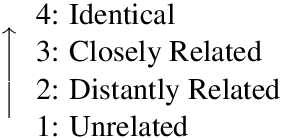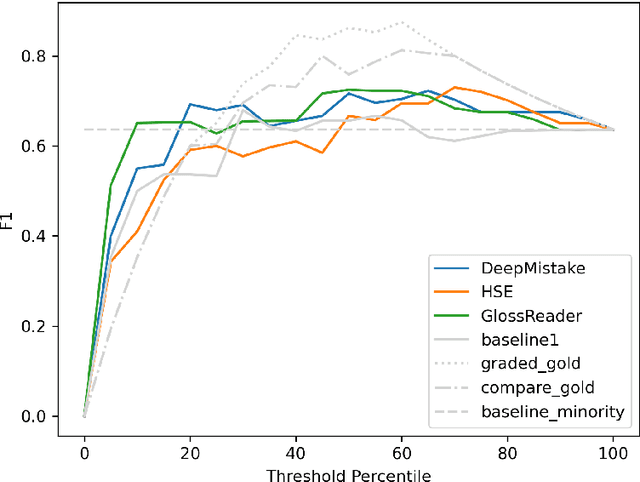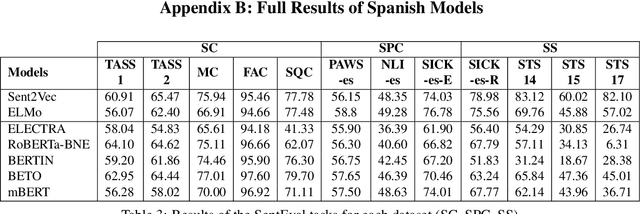Felipe Bravo-Marquez
Unveiling Backbone Effects in CLIP: Exploring Representational Synergies and Variances
Dec 22, 2023Abstract:Contrastive Language-Image Pretraining (CLIP) stands out as a prominent method for image representation learning. Various neural architectures, spanning Transformer-based models like Vision Transformers (ViTs) to Convolutional Networks (ConvNets) like ResNets, are trained with CLIP and serve as universal backbones across diverse vision tasks. Despite utilizing the same data and training objectives, the effectiveness of representations learned by these architectures raises a critical question. Our investigation explores the differences in CLIP performance among these backbone architectures, revealing significant disparities in their classifications. Notably, normalizing these representations results in substantial performance variations. Our findings showcase a remarkable possible synergy between backbone predictions that could reach an improvement of over 20% through informed selection of the appropriate backbone. Moreover, we propose a simple, yet effective approach to combine predictions from multiple backbones, leading to a notable performance boost of up to 6.34\%. We will release the code for reproducing the results.
LSCDiscovery: A shared task on semantic change discovery and detection in Spanish
May 13, 2022



Abstract:We present the first shared task on semantic change discovery and detection in Spanish and create the first dataset of Spanish words manually annotated for semantic change using the DURel framework (Schlechtweg et al., 2018). The task is divided in two phases: 1) Graded Change Discovery, and 2) Binary Change Detection. In addition to introducing a new language the main novelty with respect to the previous tasks consists in predicting and evaluating changes for all vocabulary words in the corpus. Six teams participated in phase 1 and seven teams in phase 2 of the shared task, and the best system obtained a Spearman rank correlation of 0.735 for phase 1 and an F1 score of 0.716 for phase 2. We describe the systems developed by the competing teams, highlighting the techniques that were particularly useful and discuss the limits of these approaches.
ALBETO and DistilBETO: Lightweight Spanish Language Models
Apr 19, 2022



Abstract:In recent years there have been considerable advances in pre-trained language models, where non-English language versions have also been made available. Due to their increasing use, many lightweight versions of these models (with reduced parameters) have also been released to speed up training and inference times. However, versions of these lighter models (e.g., ALBERT, DistilBERT) for languages other than English are still scarce. In this paper we present ALBETO and DistilBETO, which are versions of ALBERT and DistilBERT pre-trained exclusively on Spanish corpora. We train several versions of ALBETO ranging from 5M to 223M parameters and one of DistilBETO with 67M parameters. We evaluate our models in the GLUES benchmark that includes various natural language understanding tasks in Spanish. The results show that our lightweight models achieve competitive results to those of BETO (Spanish-BERT) despite having fewer parameters. More specifically, our larger ALBETO model outperforms all other models on the MLDoc, PAWS-X, XNLI, MLQA, SQAC and XQuAD datasets. However, BETO remains unbeaten for POS and NER. As a further contribution, all models are publicly available to the community for future research.
Evaluation Benchmarks for Spanish Sentence Representations
Apr 15, 2022



Abstract:Due to the success of pre-trained language models, versions of languages other than English have been released in recent years. This fact implies the need for resources to evaluate these models. In the case of Spanish, there are few ways to systematically assess the models' quality. In this paper, we narrow the gap by building two evaluation benchmarks. Inspired by previous work (Conneau and Kiela, 2018; Chen et al., 2019), we introduce Spanish SentEval and Spanish DiscoEval, aiming to assess the capabilities of stand-alone and discourse-aware sentence representations, respectively. Our benchmarks include considerable pre-existing and newly constructed datasets that address different tasks from various domains. In addition, we evaluate and analyze the most recent pre-trained Spanish language models to exhibit their capabilities and limitations. As an example, we discover that for the case of discourse evaluation tasks, mBERT, a language model trained on multiple languages, usually provides a richer latent representation than models trained only with documents in Spanish. We hope our contribution will motivate a fairer, more comparable, and less cumbersome way to evaluate future Spanish language models.
PolyLM: Learning about Polysemy through Language Modeling
Jan 25, 2021



Abstract:To avoid the "meaning conflation deficiency" of word embeddings, a number of models have aimed to embed individual word senses. These methods at one time performed well on tasks such as word sense induction (WSI), but they have since been overtaken by task-specific techniques which exploit contextualized embeddings. However, sense embeddings and contextualization need not be mutually exclusive. We introduce PolyLM, a method which formulates the task of learning sense embeddings as a language modeling problem, allowing contextualization techniques to be applied. PolyLM is based on two underlying assumptions about word senses: firstly, that the probability of a word occurring in a given context is equal to the sum of the probabilities of its individual senses occurring; and secondly, that for a given occurrence of a word, one of its senses tends to be much more plausible in the context than the others. We evaluate PolyLM on WSI, showing that it performs considerably better than previous sense embedding techniques, and matches the current state-of-the-art specialized WSI method despite having six times fewer parameters. Code and pre-trained models are available at https://github.com/AlanAnsell/PolyLM.
WASSA-2017 Shared Task on Emotion Intensity
Aug 11, 2017



Abstract:We present the first shared task on detecting the intensity of emotion felt by the speaker of a tweet. We create the first datasets of tweets annotated for anger, fear, joy, and sadness intensities using a technique called best--worst scaling (BWS). We show that the annotations lead to reliable fine-grained intensity scores (rankings of tweets by intensity). The data was partitioned into training, development, and test sets for the competition. Twenty-two teams participated in the shared task, with the best system obtaining a Pearson correlation of 0.747 with the gold intensity scores. We summarize the machine learning setups, resources, and tools used by the participating teams, with a focus on the techniques and resources that are particularly useful for the task. The emotion intensity dataset and the shared task are helping improve our understanding of how we convey more or less intense emotions through language.
Emotion Intensities in Tweets
Aug 11, 2017



Abstract:This paper examines the task of detecting intensity of emotion from text. We create the first datasets of tweets annotated for anger, fear, joy, and sadness intensities. We use a technique called best--worst scaling (BWS) that improves annotation consistency and obtains reliable fine-grained scores. We show that emotion-word hashtags often impact emotion intensity, usually conveying a more intense emotion. Finally, we create a benchmark regression system and conduct experiments to determine: which features are useful for detecting emotion intensity, and, the extent to which two emotions are similar in terms of how they manifest in language.
 Add to Chrome
Add to Chrome Add to Firefox
Add to Firefox Add to Edge
Add to Edge